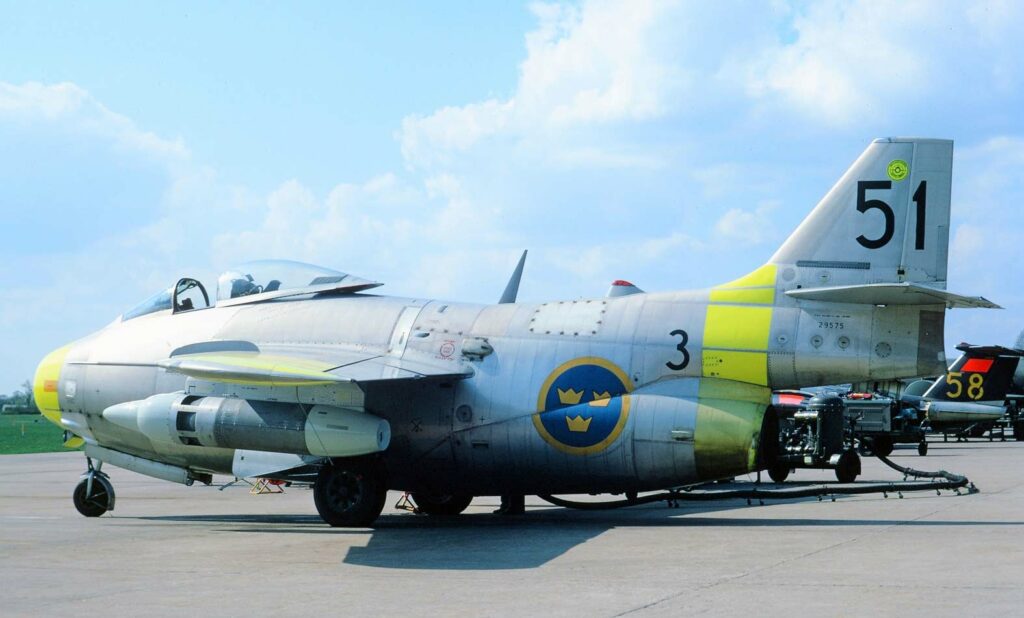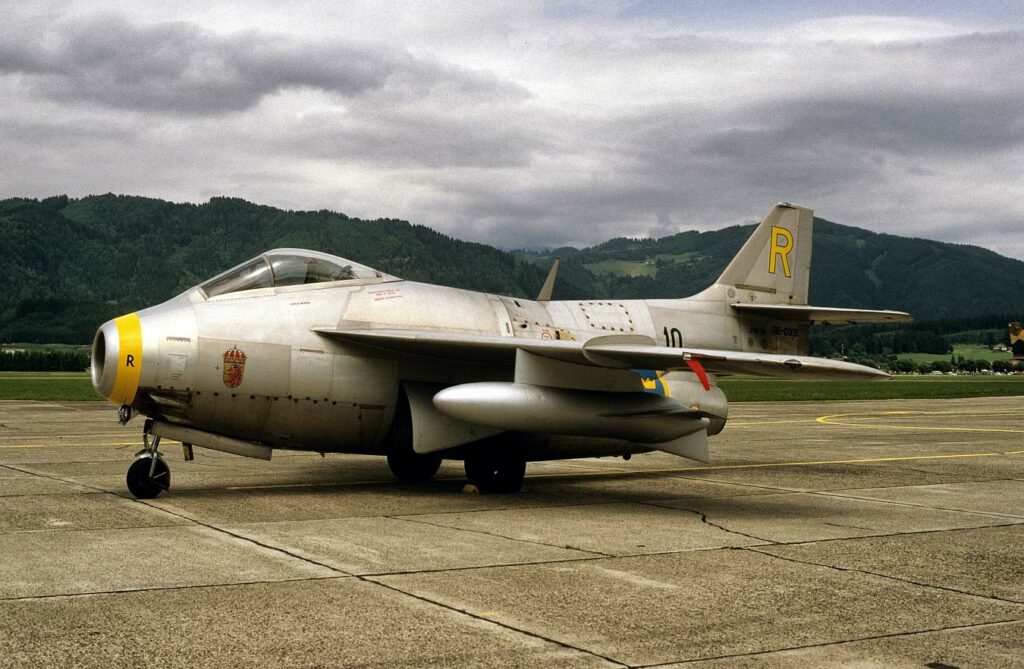The Saab 29 Tunnan, a Swedish early jet fighter, was noted for its barrel-shaped fuselage and significant speed and agility for its time.
The Saab 29 Tunnan was a pioneering jet fighter developed by Sweden in the early Cold War era. It was one of the first European-built jet fighters to incorporate a swept-wing design and was renowned for its performance and agility. The Tunnan represented a major step in jet fighter development, particularly for a neutral country like Sweden. It embodied the technological advancement and strategic necessities of the early Cold War period.

History of the Development of the Saab 29 Tunnan
In the wake of World War II, as the Cold War tensions escalated, there was a global race to develop advanced military aircraft, particularly jet fighters. Sweden, maintaining its policy of neutrality, recognized the need to develop its own advanced jet fighter to protect its airspace and maintain sovereignty.
The Saab 29 Tunnan program was initiated by Saab (Svenska Aeroplan AB), a key player in Swedish aircraft manufacturing. The development aimed to create a jet fighter that could match or exceed the capabilities of contemporary Western and Soviet aircraft.
The project began in the late 1940s, with chief designer Frid Wänström leading the effort. The Tunnan made its first flight on September 1, 1948. This event marked a significant achievement for Saab and Swedish aviation, showcasing the nation’s industrial and technological capabilities.
The Tunnan was given the NATO reporting name “Flygande tunnan,” which means “The Flying Barrel,” a reference to its distinctive barrel-like fuselage.
Design of the Saab 29 Tunnan
The design of the Saab 29 Tunnan was innovative for its time. Its most notable feature was the swept-wing design, a relatively new concept that greatly improved performance at high speeds. The Tunnan’s fuselage was barrel-shaped, which, while unconventional, contributed to its structural strength and internal volume for fuel and armament.
The Tunnan was powered by a single Svenska Flygmotor RM2B/RM2C (a licensed-built version of the British Rolls-Royce Avon) turbojet engine, generating about 6,500 pounds of thrust. The aircraft measured 10.23 meters in length with a wingspan of 11 meters.
This design allowed for a top speed of around 1,060 km/h (660 mph) and a service ceiling of over 15,000 meters (49,000 feet). However, the Tunnan’s heavy structure made it less maneuverable compared to lighter fighters, and its engine technology was soon surpassed by newer models.
Performance of the Saab 29 Tunnan
In terms of performance, the Saab 29 Tunnan was a formidable aircraft of its time. It achieved impressive high-speed capabilities and altitude performance, crucial for intercepting high-altitude threats. The RM2 engine enabled a maximum speed of 1,060 km/h (660 mph) and a range of about 1,100 kilometers (680 miles).
When compared to its contemporaries, such as the Soviet MiG-15 and the American F-86 Sabre, the Tunnan held its own in terms of speed and altitude capabilities. However, it lagged in terms of maneuverability and later in engine technology.

Military Use and Combat of the Saab 29 Tunnan
The Tunnan was primarily armed with a combination of cannons and could also carry bombs and rockets for ground-attack missions. While it was never actively engaged in combat, the Tunnan played a crucial role in maintaining Sweden’s defense capability during the early Cold War period.
The Tunnan’s operational history was marked by its role as a deterrent in a geopolitically tense region. It was not involved in direct combat or sold to other countries, reflecting Sweden’s neutral stance. The aircraft was eventually phased out and replaced by more advanced models like the Saab 35 Draken and Saab 37 Viggen in the Swedish Air Force.
The Saab 29 Tunnan was a significant aircraft in the history of jet aviation, particularly as a product of a neutral country during the Cold War. Its innovative design and performance characteristics demonstrated Sweden’s advanced aerospace capabilities and contributed to the evolution of jet fighter technology. While it did not see combat, the Tunnan played a vital role in shaping Sweden’s air defense strategy during a critical period in world history.
Back to the Fighter Jet section.